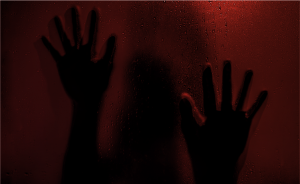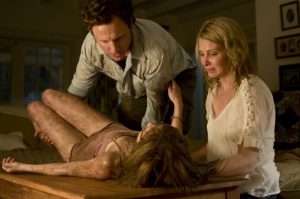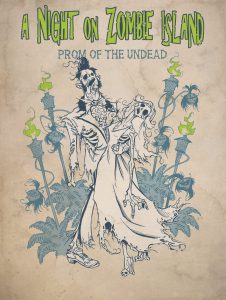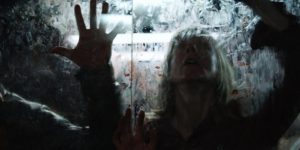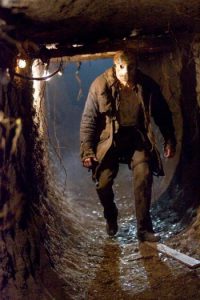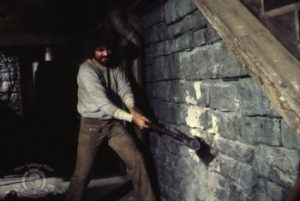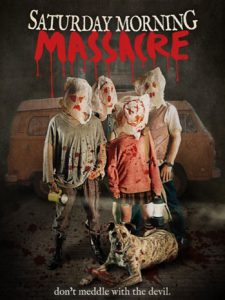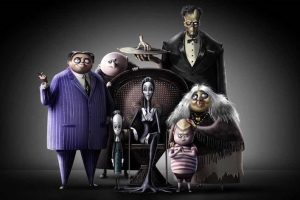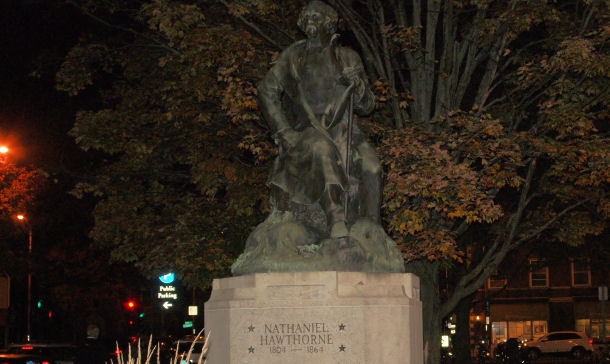
The Ten Best Horror Short Stories
As a horror writer, I subsist on genre fiction. I blame my parents who read me Bradbury and Bloch while I was still in grade school. So in honor of the many classic works of horror fiction, here are ten of the best horror short stories–with a focus on American authors (we’ll save the international list for later).
Admittedly, trying to whittle this article down to ten spots was no easy feat and resulted in the omission of some perennial favorites (sorry, Lovecraft fans). But regardless if your own horror darling made the list or not, these ten horror short stories are all highly recommended. And for those of you who don’t think you have the time, just remember you could read all of these tales in less than the running time of a couple lame horror remakes. Just saying.
“Young Goodman Brown” by Nathaniel Hawthorne
This bewitching piece of early American literature follows the titular character as he enters a mystical New England forest en route to a Witches Sabbath. Turning once again to his ancestral home of Salem, Massachusetts for inspiration, Hawthorne explores puritanical culture and the inherent hypocrisy therein, a theme that haunted the author due to his forbearer’s part in the infamous witch trials. The tale’s pacing is deliberate but the eerie imagery captivates with its pervading sense of doom. While Hawthorne’s prose is not entirely reader-friendly, especially for modern audiences, it’s worth trekking through the verbose language alongside Young Goodman Brown. You won’t find a creepier didactic allegory anywhere in fiction.

“The Legend of Sleepy Hollow” by Washington Irving
One of the few American fairy tales, “The Legend of Sleepy Hollow” is the oldest story on this list and arguably the first piece of horror fiction out of the United States. Most of the story is a gastronomic lead-up to the big finale—with his insatiable appetite, that Ichabod Crane should enter a hot dog eating contest—but once the fateful horseback ride home begins, Crane and the reader can’t turn back. Depending on your interpretation of the ending, the Headless Horseman isn’t so much a malevolent spirit as a device to ward off would-be suitors, but that doesn’t detract from the otherworldly feel to this beautifully written story. Film, television, and even a fun little Disney cartoon have never quite recaptured the magic of the original.

“Strawberry Spring” by Stephen King
Although best known for his countless novels, Stephen King has also penned plenty of amazing short stories over the past six decades. I remember spending a childhood summer reading his fantastic anthology, Night Shift, which is a true work of horror art. But while I adored the post-apocalyptic “Night Surf” and the supremely sinister “The Boogeyman”, “Strawberry Spring” is the one that sticks with you. The opposite of an Indian Summer, a Strawberry Spring is when after a spurt of warmer weather, winter descends again suddenly in March. It’s also apparently the time that ephemeral serial killers surface in New England. As part of Stephen King’s “Dollar Babies”, in which the author sells rights for his short stories to aspiring filmmakers for one dollar, there was a short film based on “Strawberry Spring”. However, it’s not entirely faithful (or very good), so skip it and read the original.

“The Vengeance of Nitocris” by Tennessee Williams
Playwright Tennessee Williams is best known for his antebellum tales of women in distress a la A Streetcar Named Desire and Cat on a Hot Tin Roof, but his very first published work was a horror doozy. Allegedly based on the true story of the eponymous Egyptian queen, “The Vengeance of Nitocris” follows a newly crowned empress as she avenges her brother’s death at the hands of an angry mob. Decades before the Pultizer came calling, Williams proved his aptitude at strong characterizations, employing Nitocris as an intelligent and unrepentant female protagonist—a rarity in any genre, especially in 1928. Step aside Cleopatra; there’s a tougher, cooler pharaoh in town.

“The Black Cat” by Edgar Allan Poe
Some Poe fanatics prefer “The Cask of the Amontillado”, but for me, the yarn about a hapless feline named Pluto will always reign supreme. After reading this one about a man who tortures and kills his cat before he does about the same to his wife, it’s almost surprising to learn that Poe truly adored cats, even writing with one perched on his shoulders. But then again, the cat does wreak a fitting revenge, so maybe Poe’s adulation for the species isn’t so surprising after all. For the truly devoted fan, be sure to visit his former Philadelphia home where you see the gloomy basement that inspired “The Black Cat”. But a word of warning: it’s just as creepy as you might expect, especially if you linger between those hallowed walls all alone. The ghost of Pluto might just purr at your feet.

“Graveyard Shift” by Richard Matheson
Not to be confused with the Stephen King story of the same name, “Graveyard Shift” comes to us courtesy of I Am Legend and Twilight Zone scribe Richard Matheson. Scant on word count, this epistolary tale manages to pack one of horror fiction’s greatest wallops. Lacking any supernatural or paranormal elements, “Graveyard Shift” garners its chills from perhaps the scariest place of all: the cruelty of the human heart. And though I won’t give away too many details, suffice it to say the departed matriarch at the center of the mystery never earned the Mother of the Year award—unless Charles Addams was on the voting committee.

“A Case of the Stubborns” by Robert Bloch
Though known worldwide as the author of Psycho, Robert Bloch certainly did more than just create Norman Bates. The premise for his short story, “A Case of the Stubborns”, is simple yet ghastly: Grandpa dies but refuses to accept it. He carries on as though nothing has happened and refuses to believe his family members that he is in fact diseased. Adapted in 1984 for an episode of Tales from the Darkside, the macabre humor is dark but undeniable, making this probably the lightest fare on this list, even though it’s sinister enough to turn a beloved family patriarch into a curmudgeonly corpse.

“The Lottery” by Shirley Jackson
If forced to choose (though who ever actually forces you to choose?), Shirley Jackson is my all-time favorite author. She brought horror fans fantastically surreal novels like We Have Always Lived in the Castle and The Haunting of Hill House. But her best known work was a pithy tale of suburban evil called “The Lottery”. At one point, it was supposedly the most anthologized story in all of American literature, and when it appeared in The New Yorker in 1948, it earned the distinction of receiving more hate mail than any other piece in the publication’s history. People were furious with Jackson and her allegations of horror lurking just beneath the happy smiles of domestic life. I say the readers doth protest too much.

“The Lake” by Ray Bradbury
From well-known classics like “Homecoming” to lesser-known gems like “The Small Assassin”, Bradbury penned a slew of seminal horror stories. But as the first one he ever published, “The Lake” is where the years of genre classics all began. Based in part on Bradbury’s real-life experience, the prose of “The Lake” is practically poetry, but just because he makes the grisly scenes sound beautiful doesn’t mean the fear isn’t still palpable. This ode to love lost and bygone childhood manages to infuse sublime melancholy into one of fiction’s eeriest and most restrained ghost stories. Sandcastles on the beach won’t ever feel the same.

“The Professor’s Teddy Bear” by Theodore Sturgeon
No list of horror short stories would be complete without at least one offbeat entry. Sporting a premise equal parts baleful and bizarre, “The Professor’s Teddy Bear” is difficult to describe, at the very least because any amount of explanation gives too much away. This is time-bending fiction at its best and most horrific along with a teddy bear you wouldn’t ever want to take on a proverbial picnic. From Child’s Play to Dolls, every modern tale of hellish toys owes a great debt to Sturgeon’s saga of a poly-blend monster. And did I mention the bear might be an alien? Check your expectations at the door.

Honorable Mention: “The Yellow Wallpaper” by Charlotte Perkins Gilman
Not a typical horror story by any means, this psychological unraveling features a female protagonist who has been forced into post-childbirth bed rest by her doctor husband. She slowly becomes convinced a woman lives in the wallpaper of her bedroom and that she alone can free her. Don’t let the early feminist themes deter you; the creep factor on this one goes to eleven.
What’s your favorite horror short story? Let me know in the comments below.



